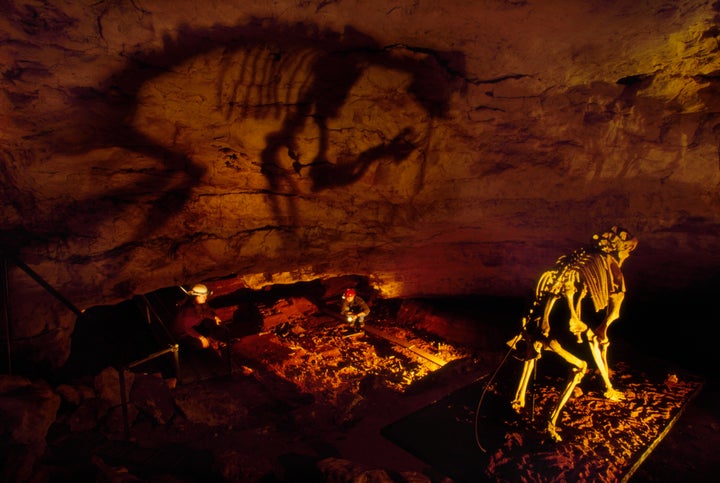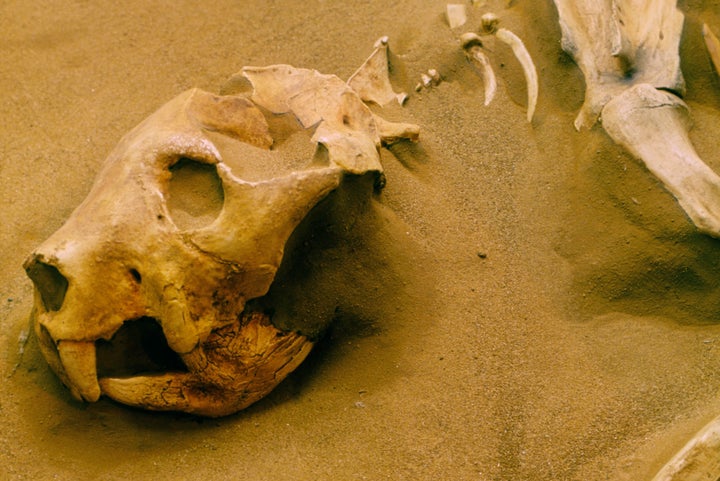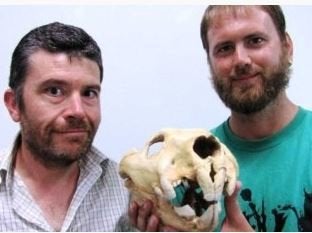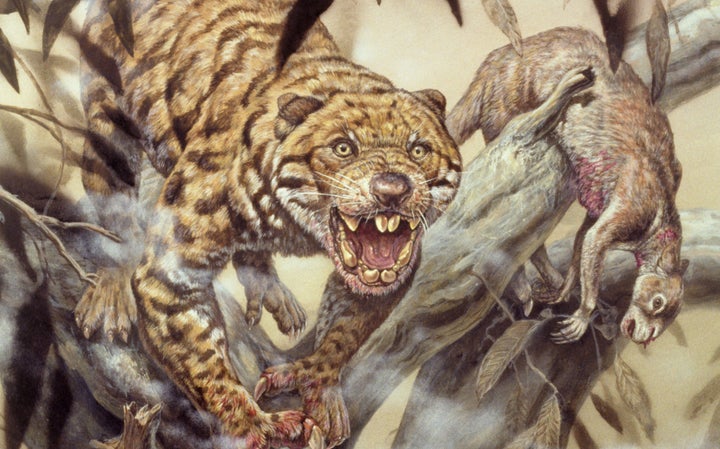
For years, the Australians have been lying to us.
Our “friends” down under have long perpetuated a blatant falsehood that their island nation is home to “drop bears” -- large, predatory koalas that supposedly drop from eucalyptus trees to kill and eat prey, including humans.
Even the Australian Museum perpetuates the hoax, with a page on its website written as if drop bears were real.
But guess what? The joke is on them. It turns out drop bears aren't totally the stuff of legend. Or at least, there was once a prehistoric creature that suspiciously resembles the animal of Australian lore, explained science writer Brian Switek in a National Geographic blog post this week.

Switek is talking about Thylacoleo carnifex, the “marsupial lion” (though it's not actually closely related to modern lions). Weighing up to more than 200 pounds, the animal had a skull similar to a koala’s or wombat’s, and had sharp, very large, rodent-like front teeth. The creature also had one large premolar that the Western Australian Museum describes as “an enormous bolt-cutting-like device, enabling Thylacoleo to slice through flesh with ease.”
Last month, researchers from Australia’s Flinders University published a paper indicating that these marsupial lions -- which went extinct about 46,000 years ago -- have another thing in common with drop bears. Scratch marks found in caves suggest that the creatures were excellent at climbing, and lead author Sam Arman noted in a news release that they “would easily have been able to climb trees.”

Just like the mythical “drop bears,” these prehistoric predators were no friends to human beings. “Combined with its robust build and meat-slicing teeth, the new evidence points toward T. carnifex as a stocky-yet-agile predator, a formidable threat to megafaunal herbivores, such as giant short-faced kangaroos … and humans,” according to the release.

Maybe it is best to bone up on drop bear deterrent methods after all. Just in case.

